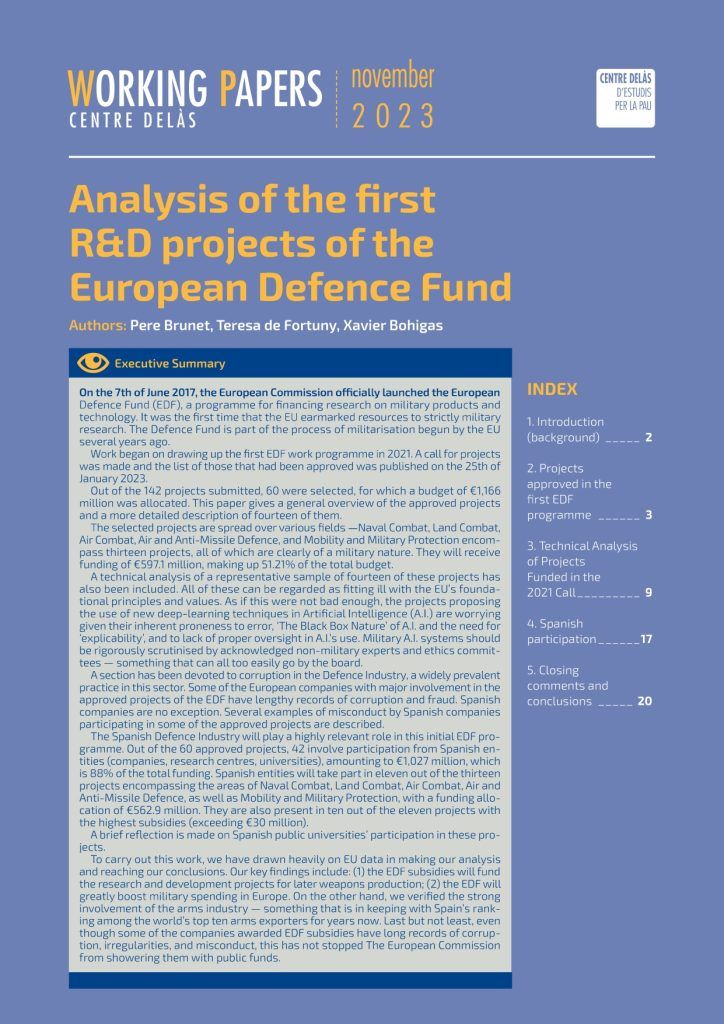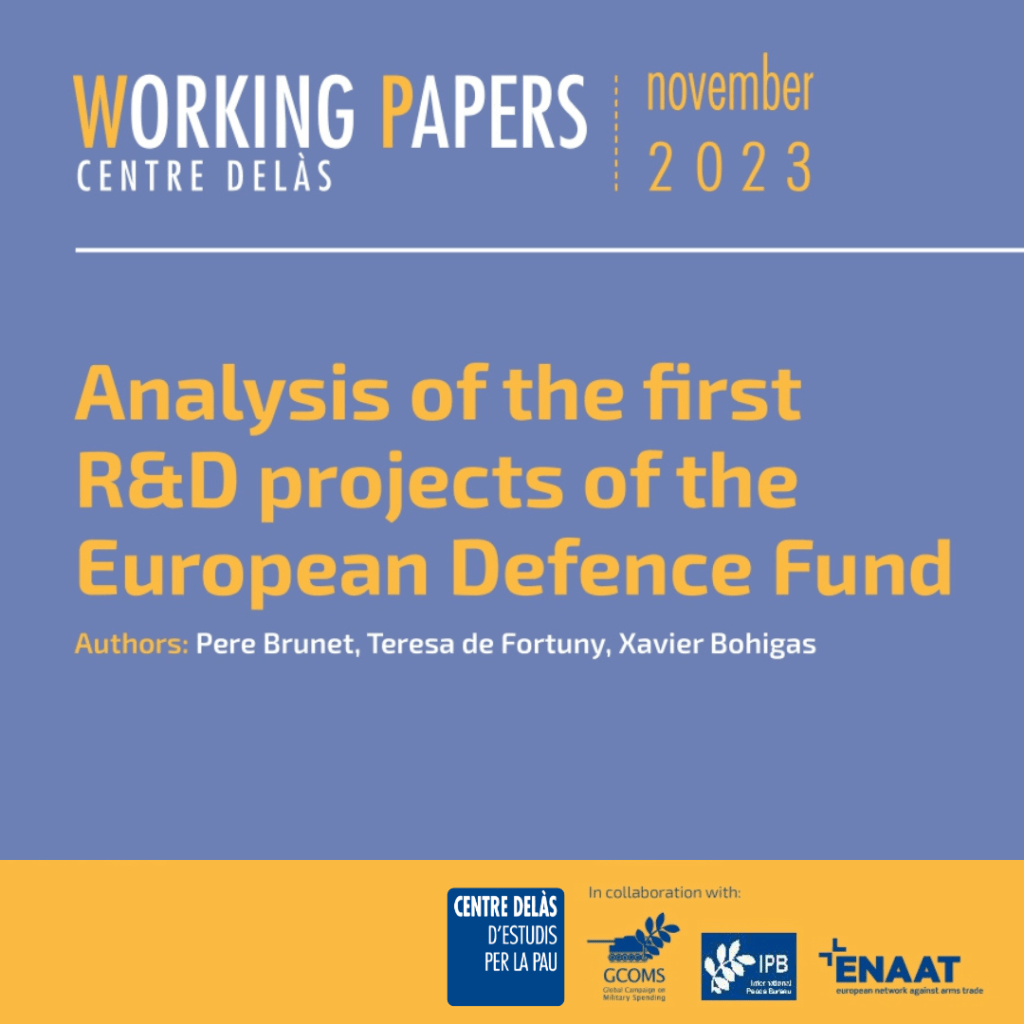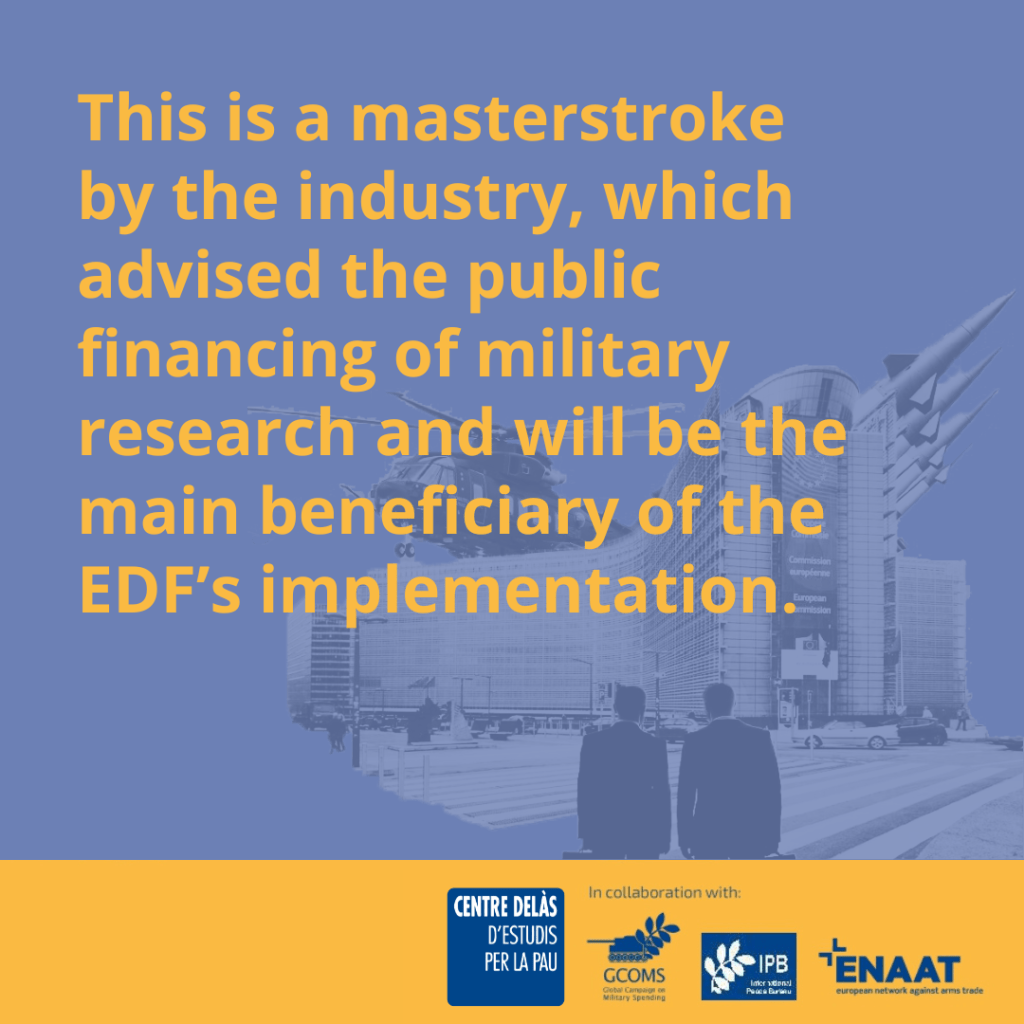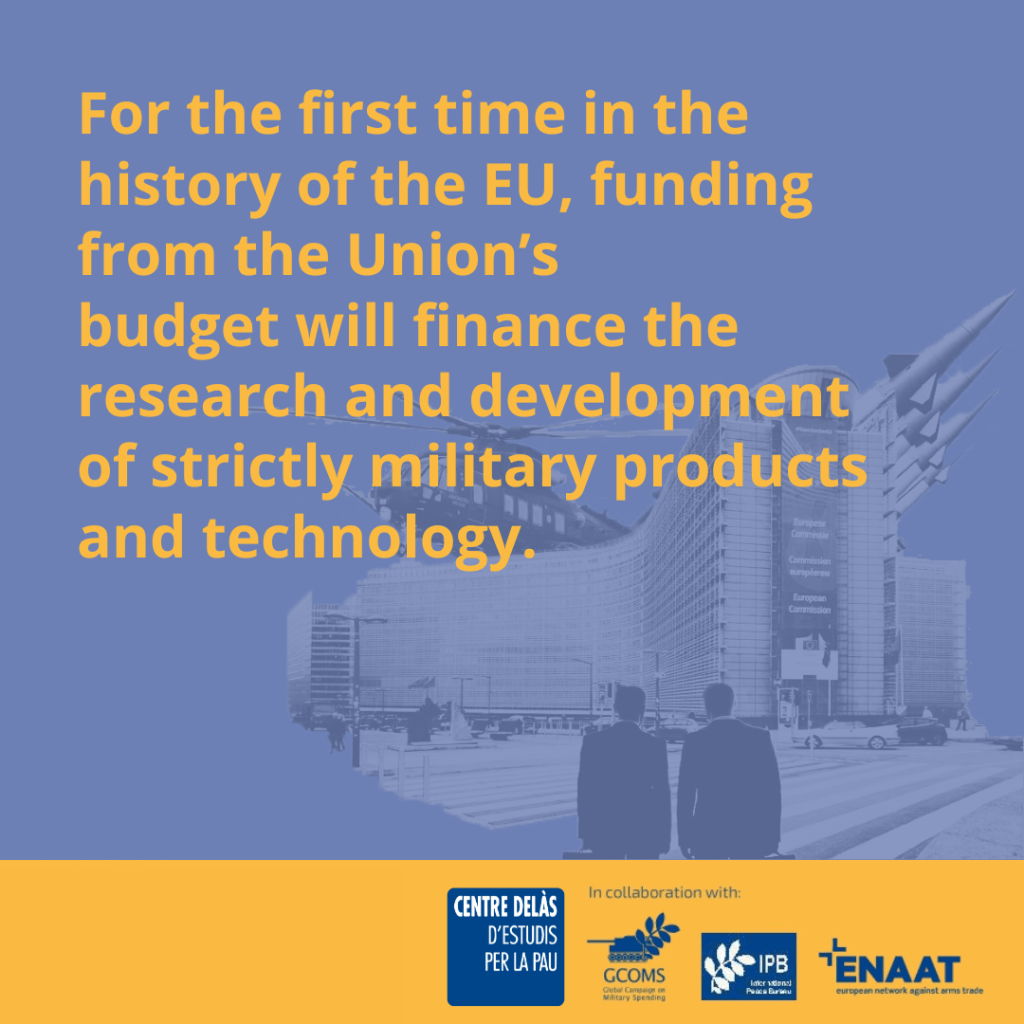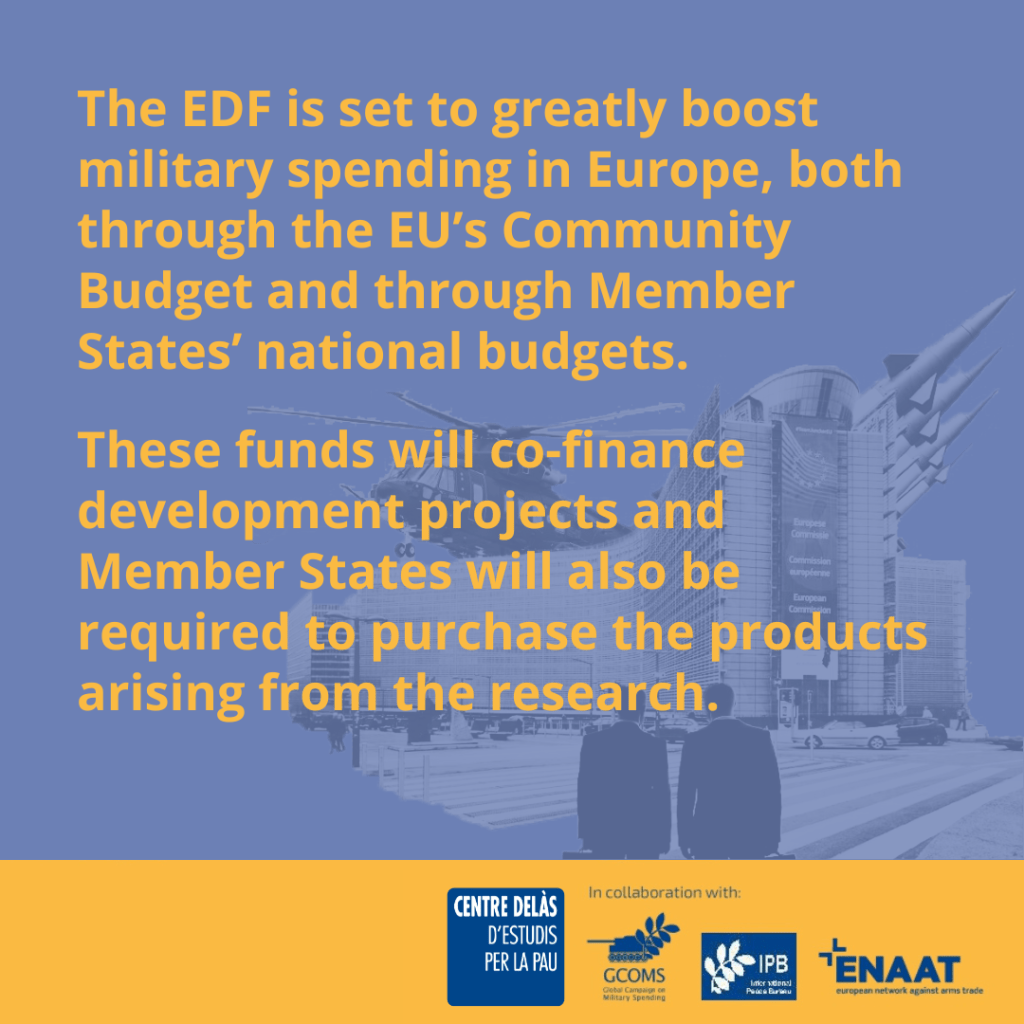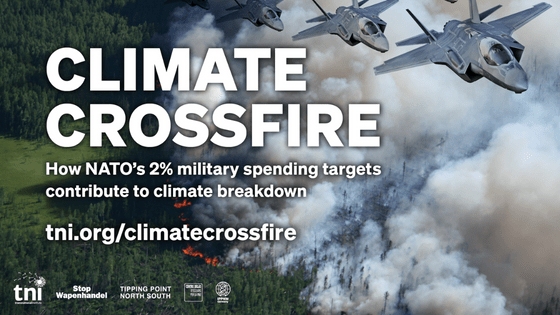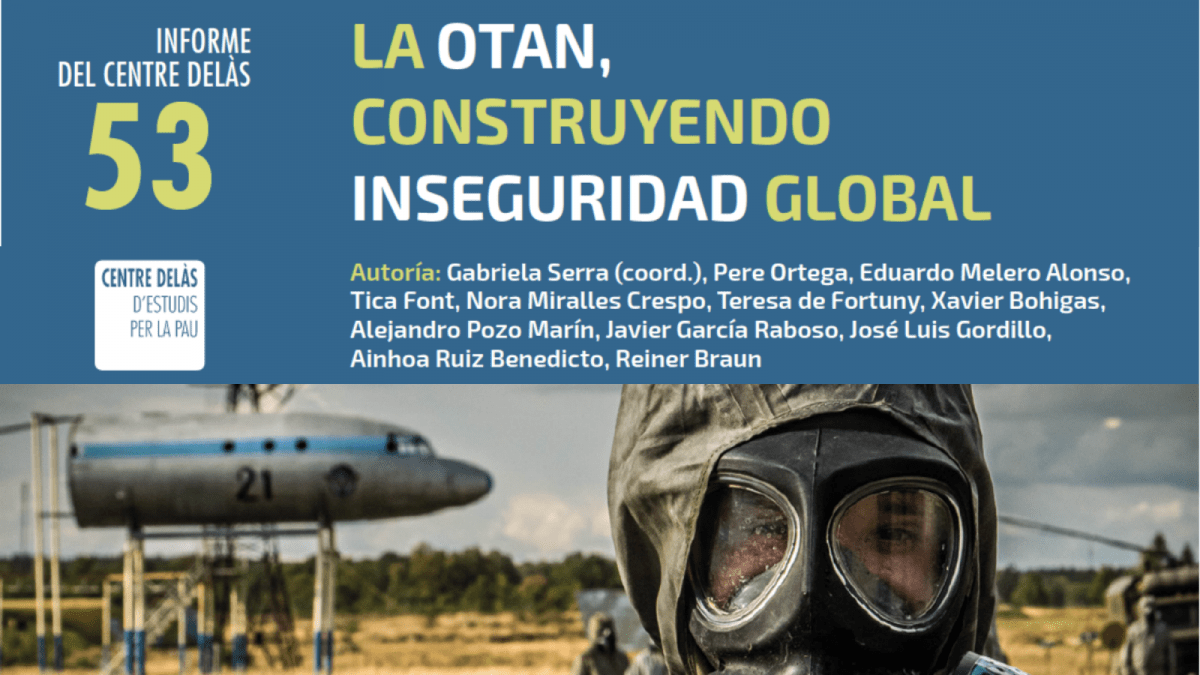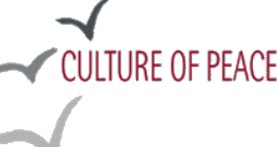For years, the European Union has chosen the path of militarisation andrearmament with a dual purpose: on one hand, to safeguard its economic and geopolitical interests (namely, control over trade routes and accessto increasingly scarce natural resources), and on the other hand, to fortify itself against migratory flows. This paper reveals one of the avenues that the EU has taken as part of this growing militarisation: the European Defence Fund.
On the 7th of June 2017, the European Commission officially launched the European Defence Fund (EDF), a programme for financing research on military products and technology. It was the first time that the EU earmarked resources to strictly military research. The Defence Fund is part of the process of militarisation begun by the EU several years ago.
Work began on drawing up the first EDF work programme in 2021. A call for projects was made and the list of those that had been approved was published on the 25th of January 2023. Out of the 142 projects submitted, 60 were selected, for which a budget of €1,166 million was allocated. This paper ellaborated by Centre Delàs for Peace Studies in collaboration with the European Network Against Arms Trade (ENAAT), the International Peace Bureau (IPB) and the Global Campaign on Military Spending (GCOMS), gives a general overview of the approved projects and a more detailed description of fourteen of them.
All projects analysed in this Working Paper can be regarded as fitting ill with the EU’s foundational principles and values. And the projects proposing the use of new deep-learning techniques in Artificial Intelligence (A.I.) are even more concerning. To carry out this work, authors have drawn heavily on EU data in making our analysis and reaching our conclusions. Key findings include: (1) the EDF subsidies will fund the research and development projects for later weapons production; (2) the EDF will greatly boost military spending in Europe. (3) The report verifies the strong involvement of the arms industry in the conception and implementation of the EDF. Five major European defence companies, specifically Leonardo, Safran, Thales, Airbus, and Saab are taking part in many of the 60 projects selected in the EDF’s first work programme. Furthermore, the CEOs of Leonardo, Airbus, and Saab were part of the Group of Personalities from which the proposal to implement a Defence Research Funding Plan emerged, which ultimately led to the creation of the EDF. Despite their lengthy histories of corruption, misconduct and irregularities, the European Commission did not hesitate first to invite them to participate in the 2015 Group of Personalities and second to select projects in which they participate or even coordinate.
Authors: Pere Brunet, Teresa de Fortuny and Xacier Bohigas.
You can download this report in English as a pdf here.
Also available in Spanish and Catalan.
